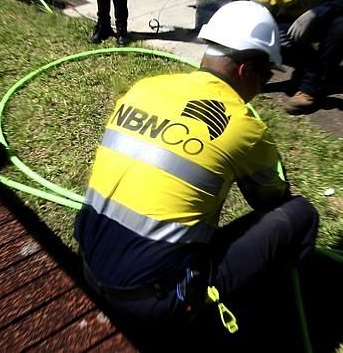NBN goes for new option
 NBN Co has unveiled a revised broadband pricing plan it hopes will gain approval from the competition watchdog.
NBN Co has unveiled a revised broadband pricing plan it hopes will gain approval from the competition watchdog.
The move comes after its initial proposal was rejected last year.
The NBN Co's latest proposition promises to offer more favourable outcomes for consumers compared to its earlier, much-criticised plan that had triggered backlash from both regulators and major telecommunications companies due to substantial price hikes.
Dubbed the “Special Access Undertaking” (SAU), the new plan seeks to eliminate capacity charges for the highest-speed plans of 100 megabytes per second (Mbps), while also introducing a novel framework for lower-speed NBN packages ranging from 12 to 50 Mbps.
Jane van Beelen of NBN noted that this strategic step “provides high-value products that will smoothly transition to flat-rate wholesale pricing on our 12, 25 and 50 Mbps speed tiers”.
However, RMIT University Professor Mark Gregory has raised concerns over the retention of contentious elements from the initial proposal, which had been rejected by the Australian Competition and Consumer Commission (ACCC) last year.
Gregory says that the continued inclusion of a capacity charge would disproportionately affect lower-income Australians, expressing scepticism about the plan's overall impact on cost reduction.
He has urged the ACCC to critically assess the revised SAU, saying the regulator should prioritise the interests of those who rely on lower-speed tiers.
ACCC Commissioner Anna Brakey acknowledged the importance of expert opinions and diverse stakeholder input in shaping the final decision regarding the approval of the revised plan, which is slated for October.
NBN Co's goal is to establish a revamped pricing plan in collaboration with regulators for the next decade.
This endeavour is part of the company's strategy to generate returns from the significant investment in Australia's fibre optic broadband infrastructure.
However, concerns have been raised about the potential financial burden on families if the pricing model does not strike an appropriate balance.
Dr Gregory further emphasises that the ten-year timeline of the plan raises concerns about timely relief for consumers from the NBN Co's costly charges. He is calling for a fresh approach that ensures affordability and value for both service providers and consumers.
The NBN Co's decision on the pricing model for 50Mbps and lower services has also attracted attention.
It selected a specific pricing option, known as “option two”, which garnered support from key players like Aussie Broadband, Vocus, Superloop, and Launtel.
This option introduces bandwidth increases and reduced excess charges, aiming to provide better price certainty and level the playing field for service providers over the next three years.
The pivotal question now centres on the reactions of Telstra and Optus, as neither telecom giant favoured “option two”.
The companies expressed concerns about the potential impacts on their costs and customer services. Telstra's response is anticipated following the announcement of its full-year results.
The revised SAU, with its broad industry support, is set to undergo further consultation by the ACCC. If deemed satisfactory, the plan could be operational by year-end.








 Print
Print